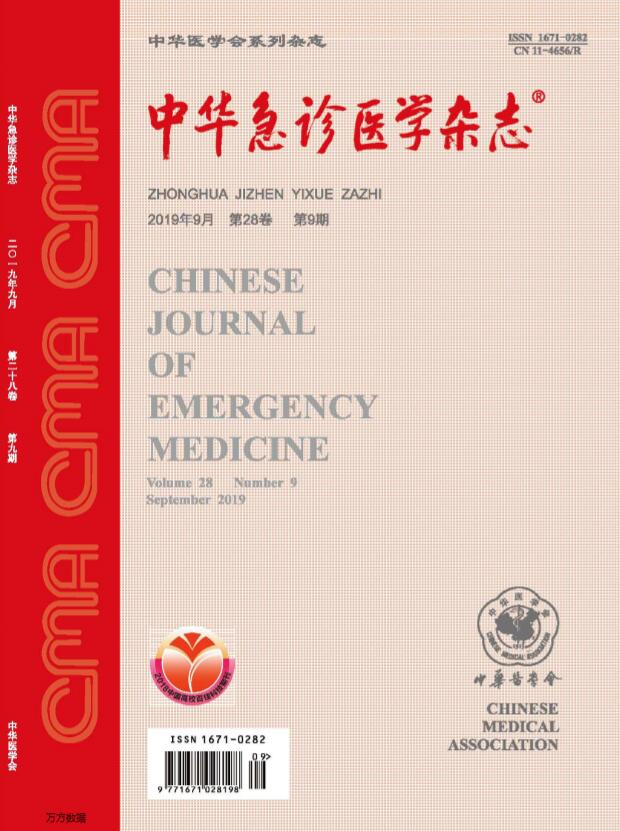Protective effect and mechanism of chemokine C-C motif ligand 6 on glucose and oxygen deprivation induced injury of cardiomyocytes
Q4 Nursing
引用次数: 0
Abstract
Objective To study the protective effect of chemokine C-C motif ligand 6 (CCL6) on glucose-oxygen deprivation induced injury in cardiomyocytes and its possible molecular mechanism. Methods Gene expression was analyzed in the public database Gene Expression Omnibus (GEO) database and gene expression of analyzed for myocardial tissue was analyzed gene expression in the sham group and the ischemia-reperfusion group (IR group). Rat H9C2 cardiomyocytes were cultured in vitro, and myocardial cell injury model was established by oxygen glucose deprivation (OGD). Cell viability was detected by MTT assay; apoptosis was determined by Annex V/PI double staining; the expression of related genes was detected by real-time PCR and Western blot. Results Compared with the sham group, transcriptome analysis and real-time PCR showed that the expression of CCL6 in the myocardial tissue of the IR group was significantly decreased (P<0.01). Oxygen glucose deprivation induced a decrease in CCL6 expression levels in H9C2 cardiomyocytes in a time-dependent manner. In addition, oxygen glucose deprivation leads to decreased cell viability and increased apoptosis; while addition of CCL6 promotes cell viability and reduces apoptosis. The lncRNA microarray and real-time PCR showed that CCL6 treatment of cardiomyocytes resulted in a significant decrease in the expression of lncRNA IGF2-AS and further increased the phosphorylation of Akt and GSK-3β. Conclusion CCL6 can inhibit cardiomyocyte injury induced by glucose deprivation, and its molecular mechanism may be related to inhibition of IGF2-AS and enhancement of Akt/GSK-3β signaling pathway. Key words: Cardiomyocytes; Chemokine; Apoptosis趋化因子C-C基序配体6对糖氧剥夺致心肌细胞损伤的保护作用及机制
目的研究趋化因子C-C基序配体6(CCL6)对糖氧剥夺诱导的心肌细胞损伤的保护作用及其可能的分子机制。方法在公共数据库Gene expression Omnibus(GEO)数据库中分析基因表达,并分析假手术组和缺血再灌注组心肌组织的基因表达。体外培养大鼠H9C2心肌细胞,采用氧糖剥夺法建立心肌细胞损伤模型。MTT法检测细胞活力;Annex V/PI双染色法检测细胞凋亡;通过实时PCR和蛋白质印迹检测相关基因的表达。结果与假手术组相比,转录组分析和实时PCR显示IR组心肌组织中CCL6的表达显著降低(P<0.01),缺氧-葡萄糖剥夺诱导H9C2心肌细胞CCL6表达水平下降呈时间依赖性。此外,缺氧-葡萄糖剥夺导致细胞活力降低和细胞凋亡增加;而添加CCL6促进细胞活力并减少细胞凋亡。lncRNA微阵列和实时PCR显示,CCL6处理心肌细胞可显著降低lncRNA IGF2-AS的表达,并进一步增加Akt和GSK-3β的磷酸化。结论CCL6能抑制葡萄糖缺乏引起的心肌细胞损伤,其分子机制可能与抑制IGF2-AS和增强Akt/GSK-3β信号通路有关。关键词:心肌细胞;趋化因子;细胞凋亡
本文章由计算机程序翻译,如有差异,请以英文原文为准。
求助全文
约1分钟内获得全文
求助全文
来源期刊

中华急诊医学杂志
Nursing-Emergency Nursing
CiteScore
0.10
自引率
0.00%
发文量
8629
期刊介绍:
Chinese Journal of Emergency Medicine is the only national journal which represents the development of emergency medicine in China. The journal is supervised by China Association of Science and Technology, sponsored by Chinese Medical Association, and co-sponsored by Zhejiang University. The journal publishes original research articles dealing with all aspects of clinical practice and research in emergency medicine. The columns include Pre-Hospital Rescue, Emergency Care, Trauma, Resuscitation, Poisoning, Disaster Medicine, Continuing Education, etc. It has a wide coverage in China, and builds up communication with Hong Kong, Macao, Taiwan and international emergency medicine circles.
 求助内容:
求助内容: 应助结果提醒方式:
应助结果提醒方式:


